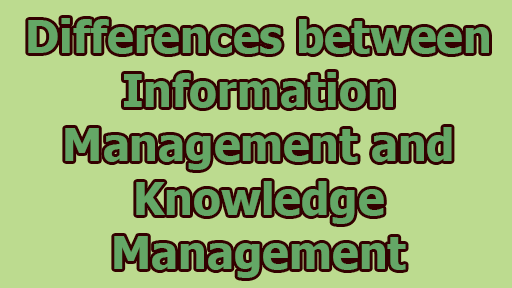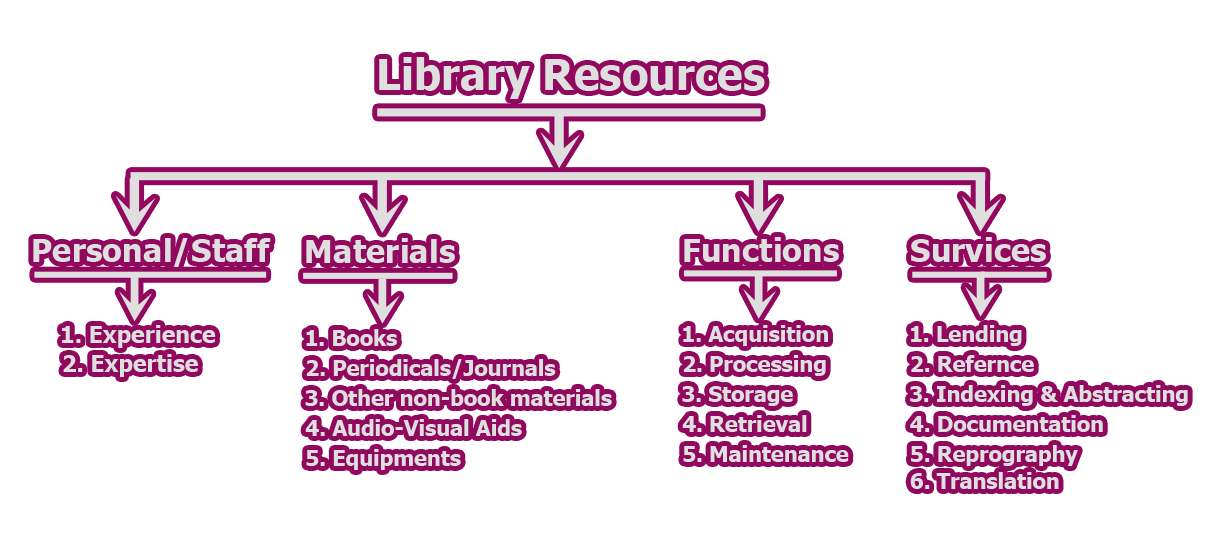Differences between Information Management and Knowledge Management:
In the landscape of organizational efficiency and effectiveness, the realms of Information Management (IM) and Knowledge Management (KM) play pivotal roles. These disciplines, though closely related, exhibit distinct characteristics in terms of focus, processes, and outcomes. Here some of the differences between information management and knowledge management are given below:
| Aspect | Information Management (IM) | Knowledge Management (KM) |
| Definition | IM involves the systematic management of processes and systems that pertain to the acquisition, organization, distribution, and utilization of information. | KM is a strategic process that focuses on creating, identifying, sharing, and utilizing the knowledge that resides within an organization to enhance its overall effectiveness. |
| Focus | IM primarily concentrates on the efficient handling of recorded or explicit information, encompassing sources like books, journals, patents, and databases. | KM, however, shifts its gaze to unstructured or tacit knowledge, which is embedded within individuals’ minds and experiences. |
| Emphasis | IM places a significant emphasis on managing information as a valuable resource, ensuring its proper storage, retrieval, and dissemination. | KM highlights the importance of managing knowledge as a dynamic resource that supports continuous learning and growth within the organization. |
| Success Criterion | The success of IM is contingent upon the accuracy, timeliness, and accessibility of information, leading to informed decision-making. | KM’s success is measured by the effective sharing, creation, and utilization of knowledge, fostering innovation and organizational adaptability. |
| Resource Perspective | IM treats information as a resource to be used by individuals and institutions, contributing to informed actions and operations. | KM regards knowledge as a resource that fuels learning and supports both individual and collective progress, promoting strategic advantage. |
| Object of Attention | IM’s focus lies in tangible information products and resources, such as documents, records, and databases, which can be readily observed. | KM shifts its focus to the intangible aspect of human knowing, encapsulating the experiences, insights, and expertise held by individuals. |
| Management Focus | IM’s management focus revolves around information infrastructure, including processes, systems, and tools that enable information flow. | KM centers on the management of people and relationships, as they form the conduits through which knowledge is shared and cultivated. |
| Key Processes | IM’s key processes involve the acquisition, storage, and accessibility of information, aiming to enhance the availability and reliability of data. | KM’s core processes encompass the creation and sharing of knowledge, fostering an environment of continuous learning and innovation. |
| Complexity | IM operates in a structured and practical manner, with well-defined processes and a controllable workflow supported by IT systems. | KM’s processes are inherently more complex due to the intangible nature of knowledge, which varies between individuals, necessitating adaptive strategies and IT support. |
| Role of Learning | Organizational learning is not a central consideration in IM, which mainly deals with the efficient management of information resources. | KM places learning at its core, recognizing that a culture of knowledge sharing and acquisition underpins organizational growth and agility. |
| Organizational Purpose | IM seeks to ensure the proper functioning of an organization by managing its informational assets and facilitating operational processes. | KM’s primary organizational purpose is to enable the organization’s success by harnessing the collective knowledge and experiences of its members. |
| Core Issues | IM’s core concerns revolve around the timely availability, accuracy, and preservation of information resources for practical use. | KM’s core issues encompass knowledge creation, innovation, and understanding, fostering critical thinking, experience sharing, and best practices. |
| Role in Libraries/Info Centers | IM’s role is particularly significant in libraries and information centers, where its focus on control and access to records is crucial. | Similarly, IM plays a crucial role in libraries and information centers, supporting the management of records and accessibility to information resources. |
| Tools and Devices | IM employs well-established tools such as classification, cataloging, and thesaurus to organize and manage information resources effectively. | KM’s tools and techniques are more challenging due to the complexity of capturing and organizing tacit knowledge, making it a continuously evolving endeavor. |
| IT Support | IT support is beneficial for IM, as technology aids in the organization, retrieval, and dissemination of information resources. | KM relies on IT to accelerate and streamline the complex processes involved in creating, sharing, and codifying individual and collective knowledge. |
In the complicated scenery of organizational management, Information Management (IM) and Knowledge Management (KM) play distinct yet interconnected roles. IM ensures the systematic handling of explicit information resources, promoting informed decision-making and operational efficiency. In contrast, KM fosters an environment of continuous learning, innovation, and collective growth through the effective utilization of tacit knowledge. While IM emphasizes structured processes and tangible information, KM embraces complexity, centered on the intangible realm of human knowing. These disciplines, each with its unique focus and purpose, collectively contribute to the holistic success of an organization.

Library Lecturer at Nurul Amin Degree College










